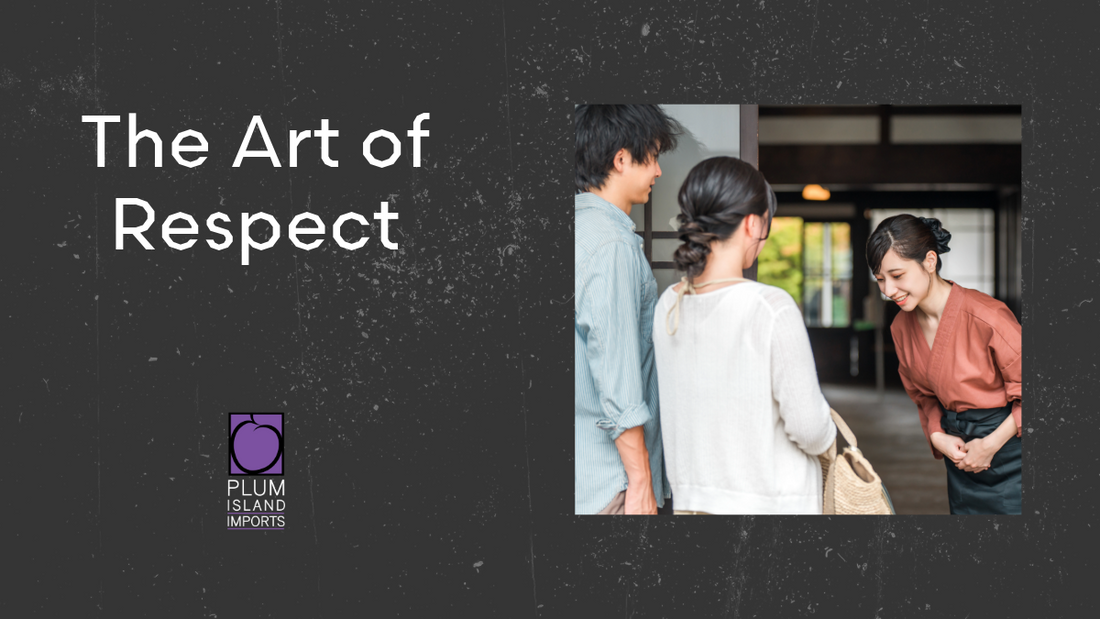A Beginner’s Guide to Japanese Etiquette
Japan isn’t just a destination - it’s an experience. From the tranquil beauty of its temples to the energy of its cities, Japan captivates the senses. But beyond the landscapes and flavours lies something even more profound: a culture of respect woven into everyday life.
If you’re planning your first trip or just curious about Japanese customs, learning the basics of etiquette can turn a good visit into a truly meaningful one. The good news? You don’t need to be perfect - just present, observant, and open-hearted.
Let’s explore the small yet powerful gestures that define Japanese etiquette - and how you can gracefully step into this beautiful cultural rhythm.

1. Bowing: A Silent Language of Respect
In Japan, a bow is more than a greeting - it’s a way of acknowledging others with humility. You’ll see people bow when saying hello, thanking someone, or apologizing. A slight nod works in casual settings, while a deeper bow is used in more formal situations.
Don’t worry about getting it exactly right. Even a simple, respectful bow shows that you’re trying and that effort goes a long way.
2. Smiling and the Power of Silence
A warm smile can open doors in any culture, and Japan is no exception. Smiles are a subtle way to show politeness, even if you don’t speak the language.
But here’s something unique: silence is golden. In conversations, pauses are welcomed, not awkward. They show thoughtfulness and respect. So if you’re unsure what to say, sometimes saying nothing at all speaks volumes.
3. Removing Shoes: A Step Into Sacred Space
One of the first etiquette customs you’ll encounter is removing your shoes before entering someone’s home - or even certain restaurants, temples, and inns. You’ll often be given indoor slippers, and there’s usually a step or entry area where this transition happens.
It’s more than just about cleanliness. It’s about leaving the outside world behind and showing respect for someone’s private or sacred space.
4. Dining Etiquette: Gratitude in Every Bite
Japanese meals are as much about manners as they are about taste.
Before eating, say Itadakimasu (いただきます) (I humbly receive), and after finishing, Gochisousama deshita (ごちそうさまでした) (Thank you for the meal). These phrases express gratitude not just to the chef, but to everyone involved in bringing the meal to the table.
Don’t be shy about slurping noodles - it’s actually seen as a compliment! And while using chopsticks, avoid pointing, waving, or sticking them upright in rice (a funeral custom).
 5. Gift-Giving: Thoughtfulness Wrapped with Care
5. Gift-Giving: Thoughtfulness Wrapped with Care
Gift-giving in Japan is a thoughtful, meaningful tradition. Whether you're bringing a souvenir from your home country or offering a token of thanks, present it with both hands, and a slight bow.
It's polite to downplay the value of your gift and to not open a received gift immediately unless invited. It’s the gesture and presentation - not the price - that truly matter.
6. Navigating Public Transportation Like a Local
Japan’s trains are fast, clean, and impressively punctual - but they’re also quiet. People speak softly (if at all), and phones are on silent mode. Even in packed stations, there’s a flow to how people move - organized, respectful, and efficient.
As a visitor, follow the lead. Respect personal space, avoid loud conversations, and let the calm energy of the commute guide your behaviour.

7. Respecting Personal Space in Public
Whether walking through Tokyo’s busy crossings or Kyoto’s serene temples, personal space is honoured - even in crowds. Avoid standing too close, speaking loudly, or making large gestures in public. It may seem small, but this awareness is a fundamental part of Japanese courtesy.
Final Thoughts: It’s Not About Perfection - It’s About Presence
Japanese etiquette may seem complex at first, but at its heart, it’s about respect - for others, for space, for shared experiences. You won’t get everything right, and that’s okay. What matters most is the intention behind your actions.
As you explore Japan, each bow, pause, and polite gesture becomes part of a quiet, beautiful conversation with the culture. And in that space of mindfulness, you’ll find deeper connections, authentic experiences, and a newfound appreciation for the elegance of everyday life.
Planning a trip to Japan?
Save this guide or share it with a fellow traveler!

